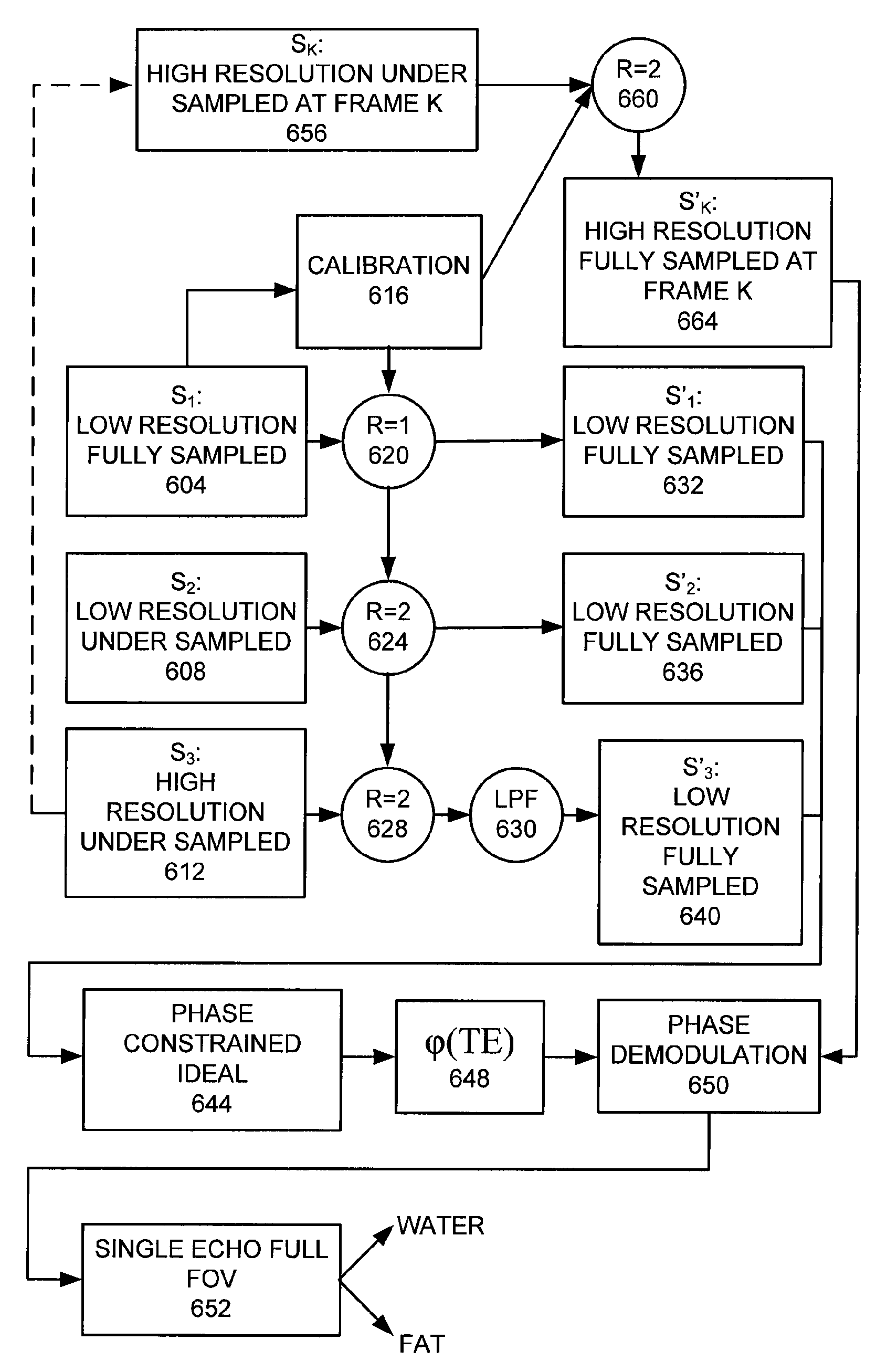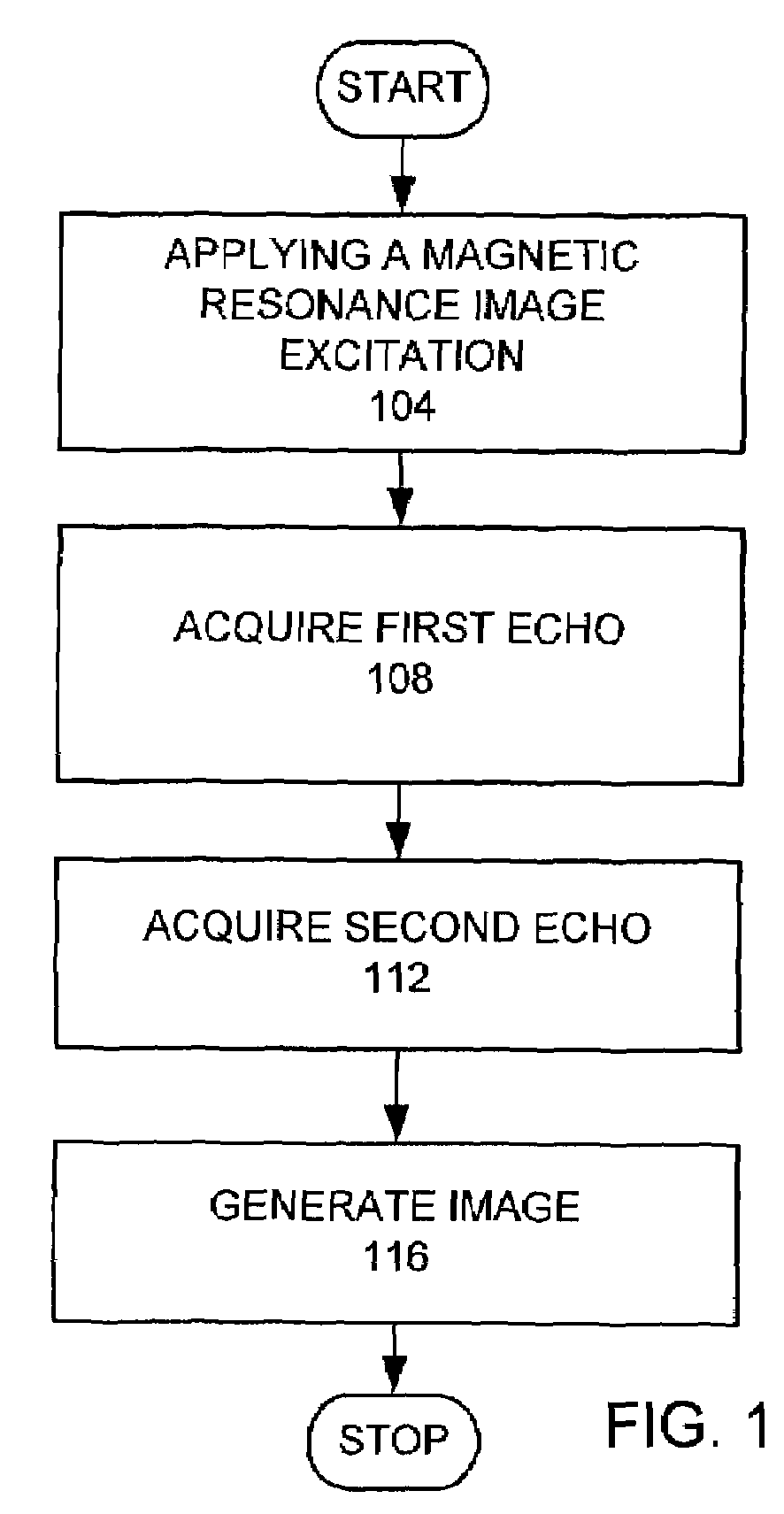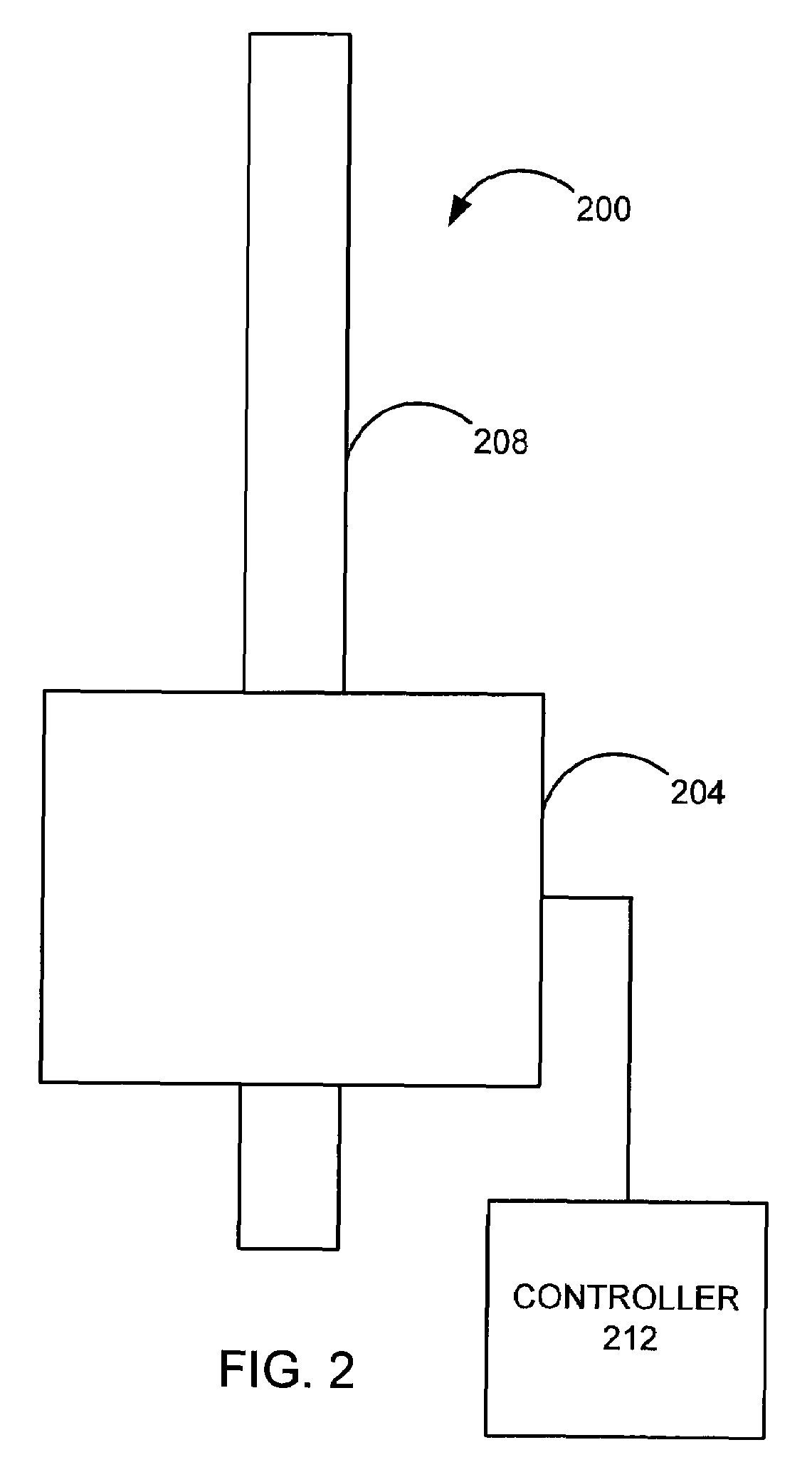Self-calibration methods for parallel imaging and multipoint water-fat separation methods
a self-calibration method and multi-point technology, applied in the field of magnetic resonance imaging, can solve the problems of limiting stir imaging to tsub>2 /sub>, routine failure of fat saturation, and sensitive to field inhomogeneity of methods
- Summary
- Abstract
- Description
- Claims
- Application Information
AI Technical Summary
Benefits of technology
Problems solved by technology
Method used
Image
Examples
examples
[0026]2+ Point Process
[0027]Reduced sampling techniques can be used to shorten IDEAL acquisition time by reducing the amount of required data to be collected. In the “2+-point” method, the B0 field is assumed to vary slowly across the object. This assumption permits a reduced sampling scheme whereby one of the three IDEAL source images can be acquired with significantly lower spatial resolution than the other two images. All three low-pass filtered images contribute to field map estimation, but water-fat decomposition is performed only on the two high-resolution source images. This modification effectively reduces the IDEAL technique from a 3-point method to a 2+-point method, where the “+” refers to the small amount of data acquired in the low-resolution source image. The reduction in scan time is therefore proportional to the amount of data omitted from the low-resolution source image—30% scan time reductions are typical.
[0028]Self-calibrated parallel imaging can also be combined ...
PUM
 Login to View More
Login to View More Abstract
Description
Claims
Application Information
 Login to View More
Login to View More - R&D
- Intellectual Property
- Life Sciences
- Materials
- Tech Scout
- Unparalleled Data Quality
- Higher Quality Content
- 60% Fewer Hallucinations
Browse by: Latest US Patents, China's latest patents, Technical Efficacy Thesaurus, Application Domain, Technology Topic, Popular Technical Reports.
© 2025 PatSnap. All rights reserved.Legal|Privacy policy|Modern Slavery Act Transparency Statement|Sitemap|About US| Contact US: help@patsnap.com



